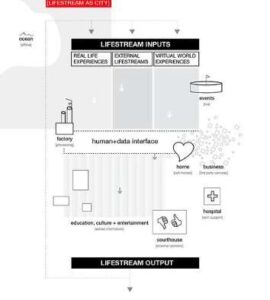Contents
This blog mission is to teach people about Forex trading, including trading strategies, robots , and indicators. We provide newcomers with lessons, reviews, tutorials, and more. Notice how the oscillators filter every price approach to the center BB line, preventing early entry into the position. Transactions are filtered using the RSI indicator and the Stochastic Oscillator .
What is the best MACD strategy?
MACD + МА strategy
The most effective and simple one would be МА. The buy and sell signals will then be as follows: If the price chart crosses the moving average downward and the histogram intersects with its average in the same direction, the sell order will be open.
The stochastic oscillator works on the theory that the price of an asset tends to close near its highs during market uptrends and near its lows during market downturns. RSI, on the other hand, works by measuring the velocity at which the price of an asset moves. When faced with a market that moves in trends, the RSI can be very useful for identifying overbought and oversold conditions. However, when the stock market moves sideways or choppily, the stochastic indicator is of more use. The stochastic chart contains two lines – one line showing the actual value of the oscillator, and the other is the 3-day moving average of the previous line.
Advantages and Disadvantages of Stochastic Oscillator
The stochastic oscillator can also be used to identify divergences, which occur when the indicator moves in the opposite direction of the price. The same signals can be generated using simple or exponential moving averages. The direction of the moving average conveys important information about prices. A rising moving average shows that prices are generally increasing.

As noted above, the Rate-of-Change indicator is momentum in its purest form. It measures the percentage increase or decrease in price over a given period of time. In general, prices are rising as long as the Rate-of-Change remains positive. Conversely, prices are falling when the Rate-of-Change is negative.
Identifying overbought or oversold extremes comes natural to the Rate-of-Change oscillator. Keltner Channels are volatility-based envelopes set above and below an exponential moving average. This indicator is similar to Bollinger Bands, which use the standard deviation to set the bands. Instead of using the standard deviation, Keltner Channels use the Average True Range to set channel distance.
Commodity Channel Index
The lower low in the security affirms the current downtrend, but the higher low in the MACD shows less downside momentum. Despite less downside momentum, downside momentum is still outpacing upside momentum as long as the MACD remains in negative territory. Slowing downside momentum can sometimes foreshadows a trend reversal or a sizable rally.

The envelopes can also be used to identify overbought and oversold levels when the trend is relatively flat. The Money Flow Index is a rather unique indicator that combines momentum and volume with an RSI formula. RSI momentum generally favors the bulls when the indicator is above 50 and the bears when below 50.
RSI & Different Period Candlestick Periods
The longer the moving average periods, the greater the lag in the signals. However, a moving average crossover system will produce lots of whipsaws in the absence of a strong trend. Even though there are clear differences between simple moving averages and exponential moving averages, one is not necessarily better than the other. Exponential moving averages have less lag and are therefore more sensitive to recent prices – and recent price changes. Exponential moving averages will turn before simple moving averages. Simple moving averages, on the other hand, represent a true average of prices for the entire time period.
Centerline crossovers are the next most common MACD signals. A bullish centerline crossover occurs when the MACD Line moves above the zero line to turn positive. A bearish centerline crossover occurs when the MACD moves below the zero line to turn negative. Centerline crossovers can last a few days or a few months. The MACD will remain positive as long as there is a sustained uptrend.
Next, the 50-day moving average is quite popular for the medium-term trend. Many chartists use the 50-day and 200-day moving averages together. This strategy uses the Parabolic SAR indicator to pick out the trend and using the Stochastics oscillator for the confirmation for the trade.
Like all technical indicator, the Rate-of-Change oscillator should be used in conjunction with other aspects of technical analysis. On Balance Volume is a simple indicator that uses volume and price to measure buying pressure and selling pressure. Buying pressure is evident when positive volume exceeds negative volume and the OBV line rises. Selling pressure is present when negative volume exceeds positive volume and the OBV line falls. Chartists can use OBV to confirm the underlying trend or look for divergences that may foreshadow a price change. As with all indicators, it is important to use OBV in conjunction with other aspects of technical analysis.

One of the most popular indicators widely used in trading systems it the stochastic oscillator, which George Lane began to develop since the early 1950s. This oscillator popularized by George Lane is very similar to the RSI line. The next strategy useful in performing swing trades is a combination of two technical indicators RSI and Stochastics.
If the BB is inclined down and the price is in the lower part of the BB, it is a downtrend. At the same time, the entrance to the market is carried out on a rebound to the median BB line. If the price is moving inside the BB from the lower to the upper border, the trend is sidelong and you can enter inside from the BB borders. The main signals of the stochastic oscillator are lines %K and %D crossing.
By the way, there are separately short and long divergences. Short takes the period of 3-7 bars , the longer one is more extended in time. This version of the Stochastic indicator calculation is used gci trading review in most technical analysis programs. It’s hard to say which is better because these indicators give youdifferent data. You could say that the STOCH RSI is a measure of the strength of the normal RSI.
Best Time Frame for Trading: Intraday, Swing and Positional
As its name implies, the MACD is all about the convergence and divergence of the two moving averages. Convergence occurs when the moving averages move towards each other. Divergence occurs when the moving averages move away from each other. The shorter moving average (12-day) is faster and responsible for most MACD movements. The longer moving average (26-day) is slower and less reactive to price changes in the underlying security. At its most basic the Average Directional Index can be used to determine if a security is trending or not.
Therefore, moves above or below the envelopes warrant attention. A surge above the upper envelope shows extraordinary strength, while a plunge below the lower envelope shows extraordinary weakness. Due diligence is required before relying on these common signals.
Without understanding the business, it is difficult to get the conviction to give large percentage allocation in the portfolio. Remember, it’s always difficult to swim against the tide and easier to swim in the direction the tide is moving. A lot of people also want to know which time frame is the best for Swing and Positional Trading.
Which RSI is best for daily chart?
The default RSI setting of 14 periods is suitable for most traders, especially for swing traders. But some intraday traders use different settings when using the RSI indicator for day trading. They don't like using the 14 setting, because they find that it generates infrequent trading signals.
Developed by John Bollinger, Bollinger Bands are volatility bands placed above and below a moving average. Volatility is based on the standard deviation, which changes as volatility increases and decreases. The bands automatically widen when volatility increases and narrow when volatility decreases.
- A bearish divergence forms when a security records a higher high and the MACD Line forms a lower high.
- In our introductory post, I gave you an overview on the guidelines one needs to follow when you use and combine indicators on charts.
- Traditionally, and according to Wilder, RSI is considered overbought when above 70 and oversold when below 30.
- Despite less downside momentum, downside momentum is still outpacing upside momentum as long as the MACD remains in negative territory.
Stochastic oscillator assumes that momentum precedes price, compares asset’s closing price against a preset price range. If you are building a trading strategy around a stochastic oscillator, you need to watch for two things Forex Maxitrade Review – trend reversal signal and divergence. The RSI is another technical indicator that is very similar to the stochastic indicator. Both of these tools are price momentum oscillators that are used widely by traders.
It is always advised to use more than one indicators to get a signal and not rely on single indicator. Failure swings and divergences can be combined to create more robust signals. A bullish failure swing occurs when MFI becomes oversold below 20, surges above 20, holds above 20 on a pullback and then breaks above its prior reaction high.
Conversely in a bull market, the RSI tends to stay between with values between considered as support. Moving averages are used to determine supports and/or resistances. inside bar trading strategy Your stop loss will be just above the higher high and just below the lower low . You can set your take profit levels to the next major key levels.
